Key takeaways
- Soundtrap’s user-friendly interface allows for easy music creation and collaboration, fostering creativity without technical barriers.
- The platform features a vast library of loops and instruments, enhancing the creative process and overcoming creative blocks.
- Real-time collaboration can create engaging musical experiences, although it may face challenges with coordination and internet connectivity.
- While great for quick projects, Soundtrap may lack advanced editing capabilities suitable for complex productions.
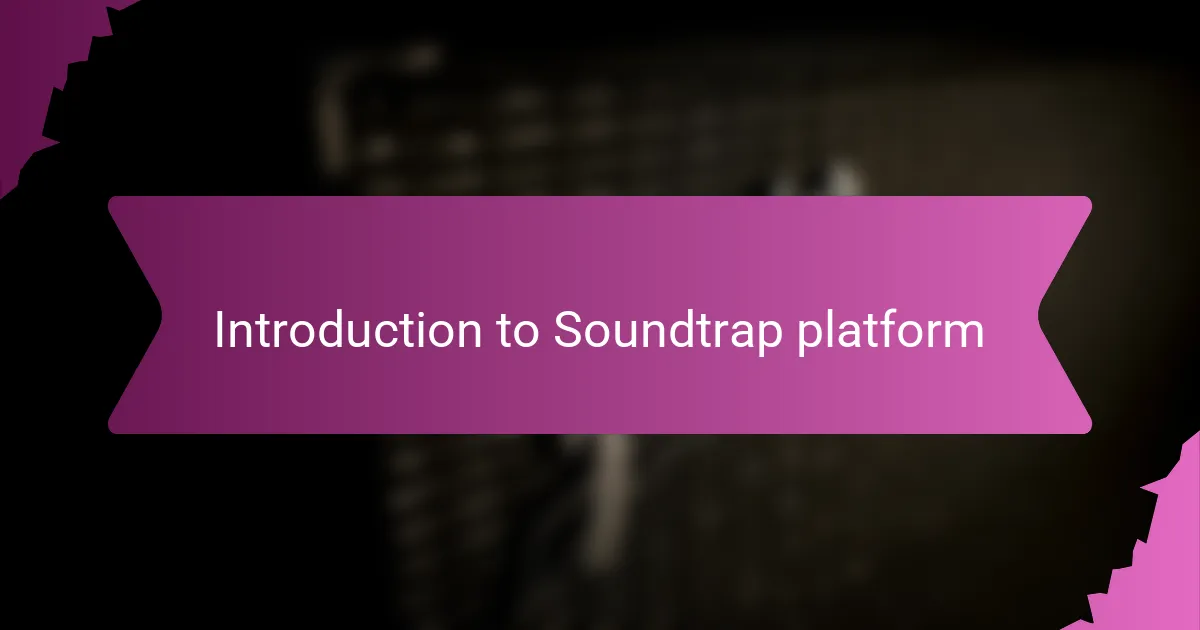
Introduction to Soundtrap platform
Soundtrap is an online music studio that instantly caught my attention with its accessibility. Have you ever wanted to bring your musical ideas to life without the hassle of complicated software? This platform lets you create, collaborate, and share music directly from your browser, which felt like a game-changer for someone always on the move.
What struck me most about Soundtrap is how user-friendly it is—even for those who aren’t tech experts. I remember my first project where I just dived in without watching a tutorial, and to my surprise, everything clicked quickly. The intuitive interface made me feel like I was sketching ideas on paper, but with sound.
Beyond its ease of use, I found Soundtrap’s collaborative features quite inspiring. Knowing that others could jump in and contribute in real time added an emotional depth to my projects. It made me wonder, how often do we miss out on creativity simply because we are isolated from others? This platform bridges that gap effortlessly.
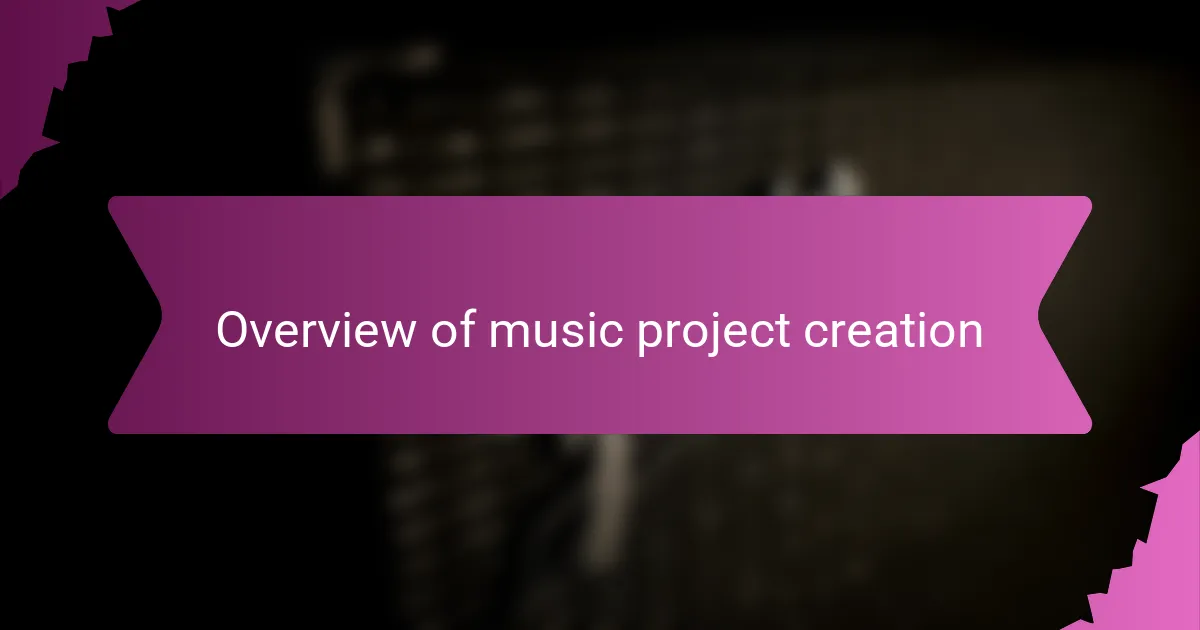
Overview of music project creation
Creating a music project often starts with a simple spark—maybe a melody stuck in your head or a beat that won’t leave you alone. For me, laying down that first track sets the tone for everything else, like sketching the outline of a painting before filling in the colors. It’s a mix of excitement and a little nervousness, wondering how the idea will grow.
One thing I’ve noticed is that organizing your tracks and arranging parts in a clear way can make or break the flow of the project. Have you ever felt overwhelmed by a cluttered workspace? Keeping things tidy doesn’t just help your ears; it keeps your mind focused. This step, though seemingly mundane, really shapes the creative journey.
Then, as layers come together, there’s this magical moment when all the pieces start to feel like a whole song—not just separate sounds thrown together. I love when that happens; it feels like the project gains its own identity. It makes me ask myself, how often do we pause to appreciate these small milestones in our creative process?
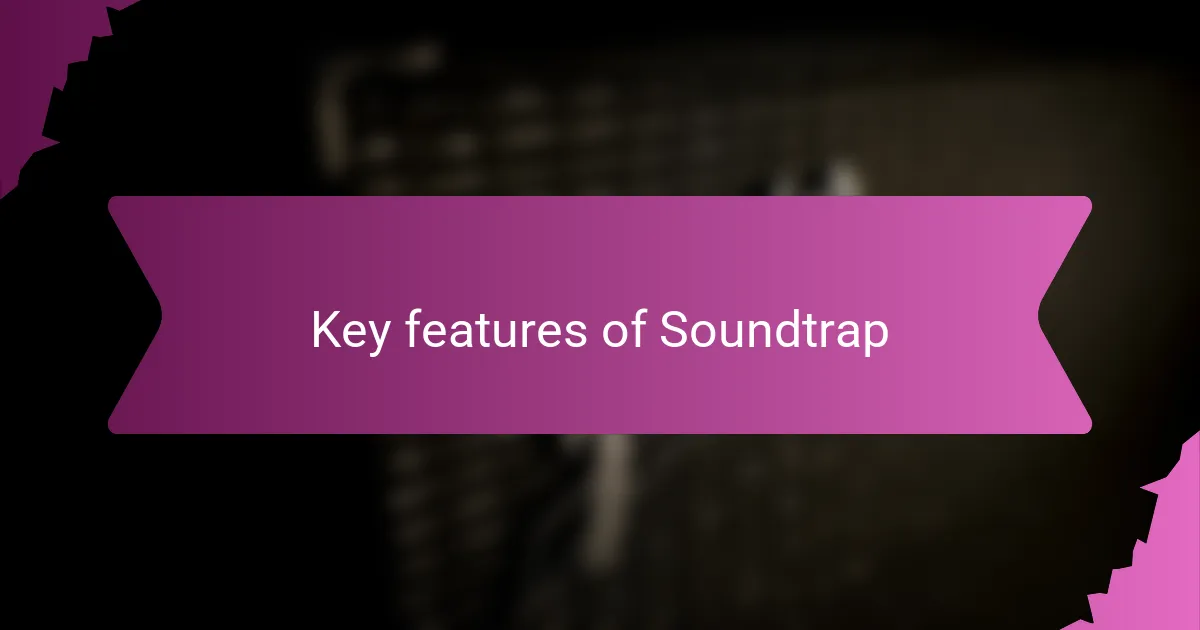
Key features of Soundtrap
One feature that really stood out for me was Soundtrap’s vast library of loops and virtual instruments. It felt like having a whole band at my fingertips, ready to jump in whenever inspiration struck. Have you ever hit a creative block and wished for just one perfect sound? This curated collection helped me push through those moments.
Another aspect I found powerful is the built-in collaboration tools. Watching a friend add a harmony to my track from miles away made the experience surprisingly intimate. It got me thinking—doesn’t music become richer when shared live, like a conversation unfolding in real time?
Soundtrap also offers seamless integration with devices and platforms, which was a lifesaver during hectic days. Whether I was on my laptop or tablet, I could pick up exactly where I left off without losing a beat. That kind of flexibility made creating feel less like a task and more like a natural extension of my day.
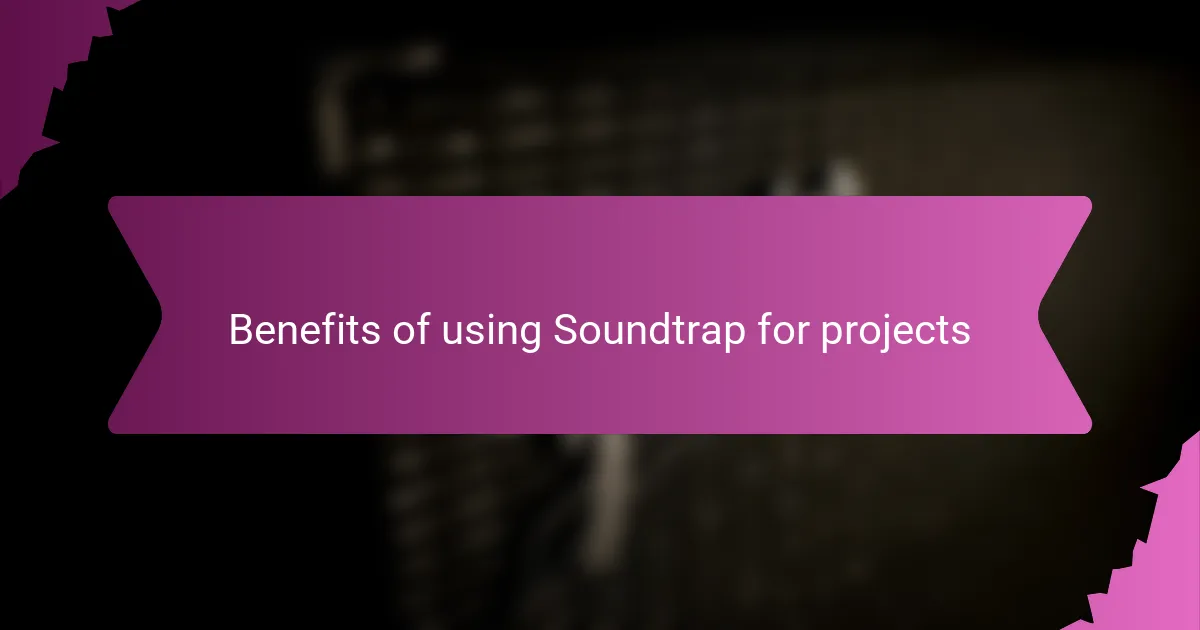
Benefits of using Soundtrap for projects
One benefit that truly resonated with me was how Soundtrap removes barriers between ideas and execution. There’s something freeing about not having to worry about complex setups or expensive gear—I could simply focus on the music itself. Have you ever felt your creativity stall because technical hurdles get in the way? Soundtrap helped me bypass that frustration entirely.
Another advantage I appreciated is Soundtrap’s collaborative environment, which feels surprisingly personal despite being online. I remember working on a track late one evening while a friend added layers from another time zone; it reminded me that music can connect us even when we’re apart. Doesn’t it make your projects feel more alive when others can jump in and share their energy in real time?
Lastly, the convenience of accessing my projects anywhere gave me a new sense of freedom. I found myself capturing musical ideas whenever inspiration hit—whether during a commute or a coffee break—without missing a moment. How often do you lose a great idea because you can’t reach your equipment? Soundtrap solved this, turning every idle minute into a creative opportunity.
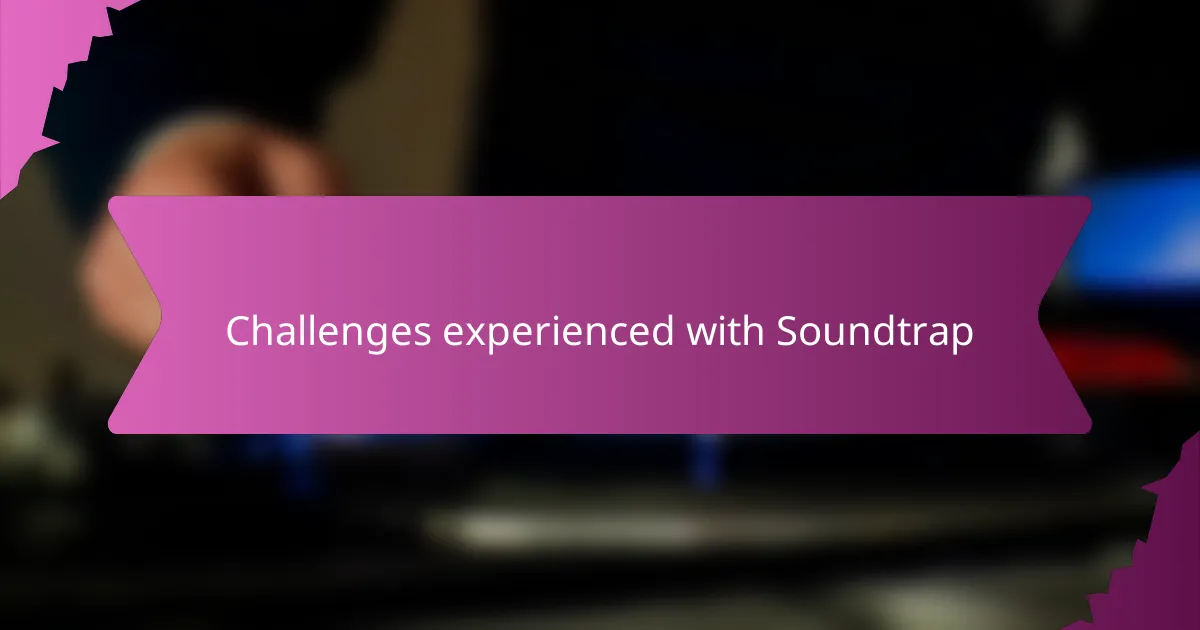
Challenges experienced with Soundtrap
Despite its many strengths, I did run into some challenges with Soundtrap that made me pause. For instance, internet connectivity became a real stumbling block during a critical collaborative session. Have you ever been in the middle of creating something and suddenly faced lag or disconnection? It’s frustrating because it interrupts the creative flow and can make you second-guess your ideas.
Another issue I noticed was the occasional limitation in editing tools. At times, I found myself wanting more precise control over audio effects or deeper mixing options. It made me wonder if this platform is better suited for quick ideas rather than more complex productions. Do you ever feel restricted when your creative vision demands features beyond what your software offers?
Lastly, while the collaborative aspect is fantastic, coordinating with others wasn’t always seamless. Syncing different schedules and managing input from multiple collaborators sometimes became chaotic. I asked myself how I could maintain the spontaneity of collaboration without letting logistical hurdles slow us down. It’s a balancing act, and Soundtrap’s structure sometimes added to that challenge.
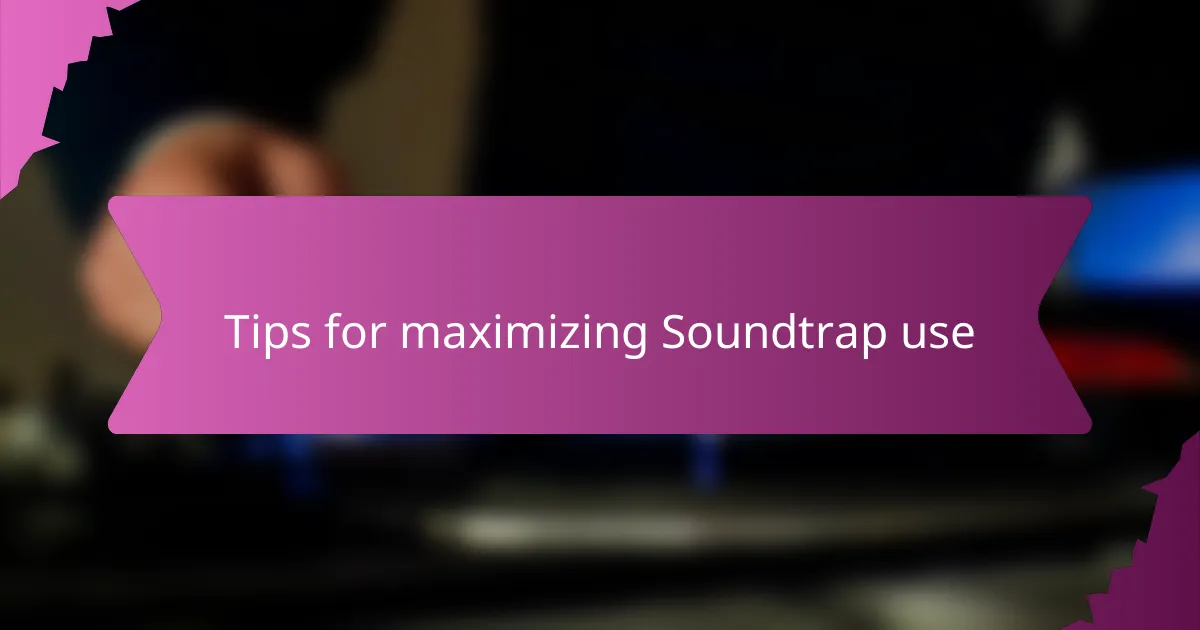
Tips for maximizing Soundtrap use
When I first started using Soundtrap, one tip that really boosted my workflow was taking full advantage of its loop library. Instead of starting from scratch, I’d browse through the loops to spark inspiration or fill gaps quickly. Have you ever felt stuck wondering how to layer your parts? Loops can be like a creative jumpstart, helping you keep momentum without getting bogged down.
Another strategy that changed the way I approached projects was organizing tracks with clear labels and colors. It might seem trivial, but this small habit kept my sessions tidy, especially when collaborating. Have you noticed how a cluttered workspace can make mixing and editing feel overwhelming? Soundtrap’s simple drag-and-drop interface made it easy for me to maintain clarity, which actually made the creative process more enjoyable.
Lastly, using the collaboration tools effectively was a game-changer. Scheduling short, focused jam sessions rather than long, drawn-out meetings helped keep the energy high and ideas flowing. I learned to communicate expectations beforehand and let everyone know when to jump in. Doesn’t collaboration shine brightest when effort feels effortless? With Soundtrap, that’s totally doable once you set the right rhythm.
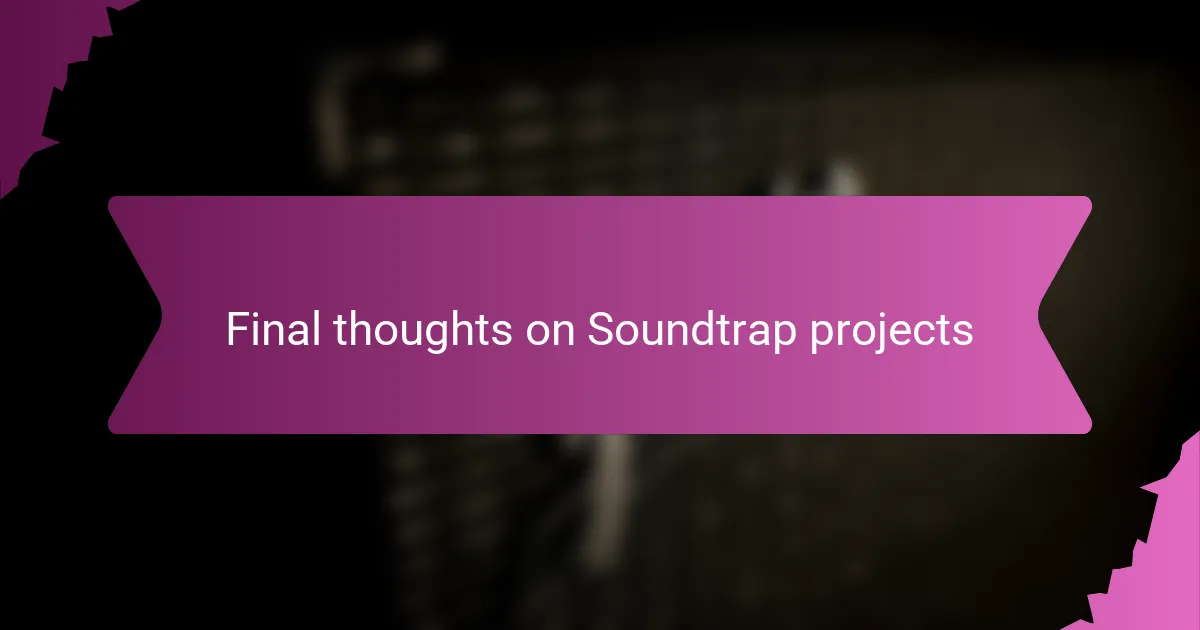
Final thoughts on Soundtrap projects
Wrapping up my experience with Soundtrap projects, I realize how it has transformed the way I approach music creation. There’s a unique satisfaction in seeing a project evolve fluidly—from an initial idea to a collaborative piece that feels alive. Have you ever felt that rush when everything just clicks together? Soundtrap made that happen for me more often than I expected.
That said, I also think it’s important to acknowledge where the platform falls short. While it’s fantastic for quick ideas and collaboration, sometimes I crave more advanced control over my sound. Does that mean Soundtrap isn’t for serious producers? Not at all—it just means knowing its strengths and limits can help you decide when to dive deeper elsewhere.
Ultimately, Soundtrap has given me a new perspective on making music—one that values accessibility and shared creativity over complexity. I keep coming back because it encourages me to experiment freely without overthinking technical barriers. Isn’t that what inspiring music projects should do in the first place?